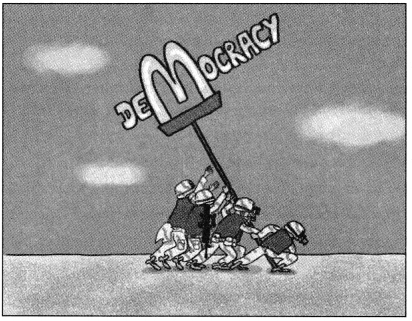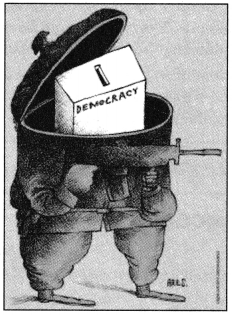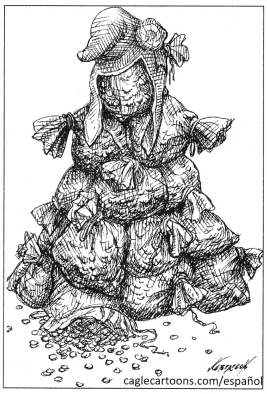Check the below NCERT MCQ Questions for Class 9 Civics Chapter 4 Electoral Politics with Answers Pdf free download. MCQ Questions for Class 9 Social Science with Answers were prepared based on the latest exam pattern. We have Provided Electoral Politics Class 9 Civics MCQs Questions with Answers to help students understand the concept very well. https://mcqquestions.guru/mcq-questions-for-class-9-civics-chapter-4/
Electoral Politics Class 9 MCQs Questions with Answers
Choose the correct option:
Electoral Politics Class 9 MCQ Question 1.
How many seats are reserved in the Lok Sabha for the Scheduled Castes and Scheduled Tribes?
(a) 47
(b) 60
(c) 84
(d) 100
Answer
Answer: (c) 84
Electoral Politics Class 9 MCQ With Answers Question 2.
Our country is divided into
(a) 500 constituencies
(b) 543 constituencies
(c) 550 constituencies
(d) 552 constituencies
Answer
Answer: (b) 543 constituencies
Class 9 Electoral Politics MCQ Question 3.
The number of Lok Sabha constituencies in Uttar Pradesh is
(a) 80
(b) 82
(c) 84
(d) 90
Answer
Answer: (c) 84
Class 9 Civics Chapter 4 MCQ With Answers Question 4.
The number of Lok Sabha constituencies in Delhi is
(a) 2
(b) 4
(c) 6
(d) 7
Answer
Answer: (d) 7
MCQ Of Electoral Politics Class 9 Question 5.
The minimum age required for being a voter is:
(a) 25 years
(b) 21 years
(c) 18 years
(d) 15 years
Answer
Answer: (c) 18 years
MCQ On Electoral Politics Class 9 Question 6.
Who appoints the Chief Election Commissioner of India?
(a) The Chief Justice of India
(b) The Prime Minister of India
(c) The President of India
(d) The Law Minister of India
Answer
Answer: (c) The President of India
Electoral Politics Class 9 MCQ Pdf Question 7.
Who led the ‘Nyaya Yudh’?
(a) Chaudhary Charan Singh
(b) Chaudhary Devi Lal
(c) Ajit Singh
(d) None of these
Answer
Answer: (b) Chaudhary Devi Lal
MCQ Of Civics Class 9 Chapter 3 Electoral Politics Question 8.
Which of these is not a feature of Indian democracy?
(a) India has the largest number of voters in the world
(b) India’s Election Commission is very powerful
(c) In India, everyone above the age of 18 has a right to vote
(d) In India, the losing parties refuse to accept the electoral verdict
Answer
Answer: (d) In India, the losing parties refuse to accept the electoral verdict
Class 9 Civics Electoral Politics MCQ Question 9.
What is meant by the term ‘constituency’?
(a) Place where the copy of constitution is kept
(b) A particular area from where voters elect a representative to the Lok Sabha / Vidhan Sabha
(c) A body of voters
(d) None of the above
Answer
Answer: (b) A particular area from where voters elect a representative to the Lok Sabha / Vidhan Sabha
Electoral Politics MCQ Class 9 Question 10.
In India, elections for which of these bodies are held after every five years?
(a) Rajya Sabha
(b) Lok Sabha and Vidhan Sabha
(c) Vidhan Parishad
(d) Only Lok Sabha
Answer
Answer: (b) Lok Sabha and Vidhan Sabha
Class 9 Civics Chapter 4 MCQ Question 11.
What is an election held for only one constituency to fill the vacancy caused due to the death or resignation of a member called?
(a) By-election
(b) Mid-term election
(c) General election
(d) None of these
Answer
Answer: (a) By-election
Electoral Politics Class 9 MCQs Question 12.
Constituencies called ‘wards’ are made for the election to
(a) Parliament
(b) State Legislative Assembly
(c) State Legislative Council
(d) Panchayats and municipal bodies
Answer
Answer: (d) Panchayats and municipal bodies
Electoral Politics Class 9 MCQ Quiz Question 13.
Which of these is not a part of the district and local level bodies?
(a) Panchayats
(b) Municipalities
(c) Corporations
(d) Lok Sabha
Answer
Answer: (d) Lok Sabha
MCQ Of Chapter Electoral Politics Class 9 Question 14.
for voting, the voter has to show which of these as identity proof?
(a) Ration card
(b) Driving license
(c) Election Photo Identity Card
(d) None of these
Answer
Answer: (c) Election Photo Identity Card
Class 9th Electoral Politics MCQ Question 15.
What is the details the candidates have to give in the legal declaration before contesting the elections?
(a) Serious criminal cases pending against them
(b) Details of assets and liabilities of the candidate and his or her family
(c) Educational qualification of the candidate
(d) All the above
Answer
Answer: (d) All the above
Question 16.
Name the body which conducts the elections in India
(a) Supreme Court
(b) Parliament
(c) Cabinet
(d) Election Commission
Answer
Answer: (d) Election Commission
Question 17.
When on election duty, under whose control does the government officers work?
(a) Central Government
(b) Election Commission
(c) District Magistrate
(d) District Court
Answer
Answer: (b) Election Commission
Question 18.
What does the term ‘incumbent’ mean?
(a) The current holder of a political office
(b) The candidate contesting the election
(c) The outgoing candidate of the dissolved House
(d) None of the above
Answer
Answer: (a) The current holder of a political office
Question 19.
The Election Commission is:
(a) An elected body
(b) An appointed body
(c) An independent body
(d) both (b) and (c)
Answer
Answer: (b) An appointed body
Question 20.
Which of the following statement is incorrect?
(a) All citizens above the age of 21 can vote in an election
(b) Every citizen has the right to vote regardless of caste religion or gender
(c) Some criminals and persons with unsound mind can be denied the right to vote in rare situations
(d) It is the responsibility of the government to get the names of all eligible voters put in the voters list
Answer
Answer: (a) All citizens above the age of 21 can vote in an election
Question 21.
What is the age of a person who can contest election for the Lok Sabha in India?
(a) 25 years
(b) 30 years
(c) 35 years
(d) 40 years
Answer
Answer: (a) 25 years
Question 22.
Voter’s List is also known as:
(a) Election Number
(b) Voter Identity Card
(c) Electoral Roll
(d) None of these
Answer
Answer: (c) Electoral Roll
Question 23.
Which of the following statements is against the democratic process of elections?
(a) Parties and candidates should be free to contest elections
(b) Elections must be held regularly immediately after the term is over
(c) The right to vote should be given to the selected people only
(d) Elections should be conducted in a free and fair manner
Answer
Answer: (c) The right to vote should be given to the selected people only
Question 24.
Reserved Constituencies ensures
(a) Right to equality
(b) Proper representation to all religious groups
(c) Proper representation to the weaker sections of society
(d) None of these
Answer
Answer: (c) Proper representation to the weaker sections of society
Question 25.
Who has given the slogan ‘Garibi Hatao’?
(a) Indira Gandhi
(b) Rajiv Gandhi
(c) Sonia Gandhi
(d) Pt. Nehru
Answer
Answer: (a) Indira Gandhi
Question 26.
Who appoints the Chief Election Commissioner of India?
(a) The Chief Justice of India
(b) The Prime Minister of India
(c) The President of India
(d) The people of India
Answer
Answer: (c) The President of India
Question 27.
The number of seats reserved for Scheduled Castes in the Lok Sabha is:
(a) 59
(b) 79
(c) 84
(d) 99
Answer
Answer: (c) 84
We hope the given NCERT MCQ Questions for Class 9 Civics Chapter 4 Electoral Politics with Answers Pdf free download will help you. If you have any queries regarding Electoral Politics CBSE Class 9 Civics MCQs Multiple Choice Questions with Answers, drop a comment below and we will get back to you soon.


